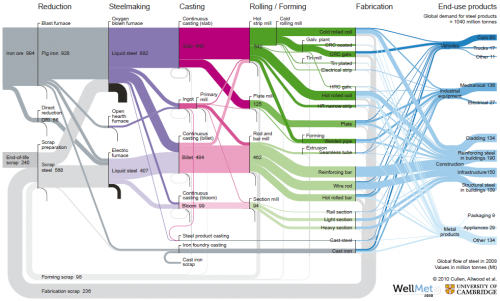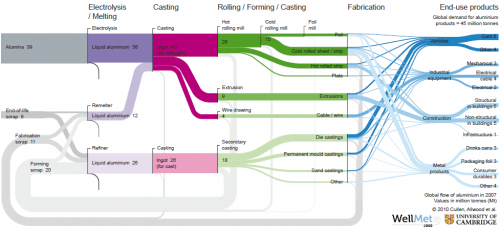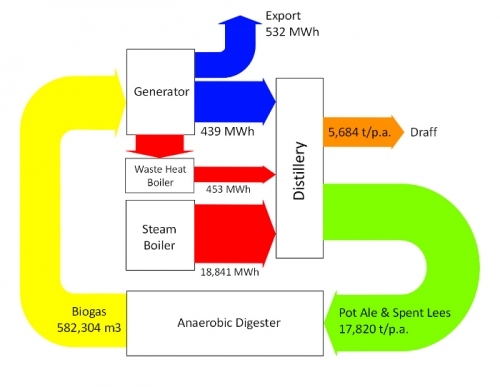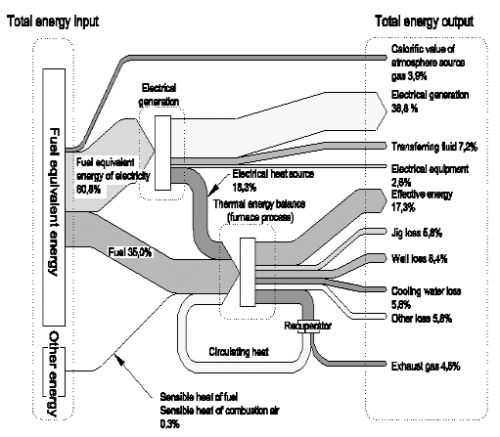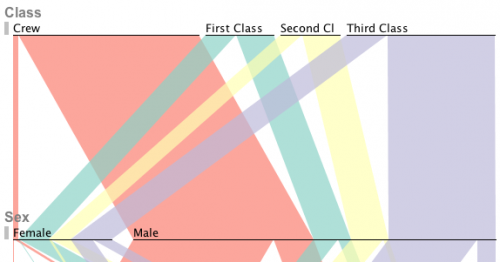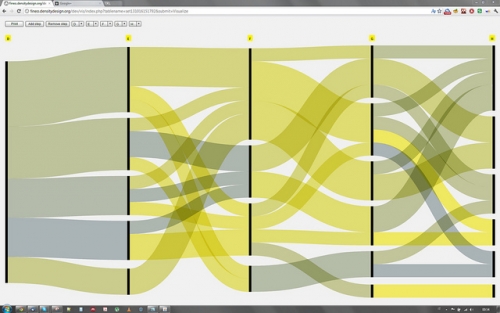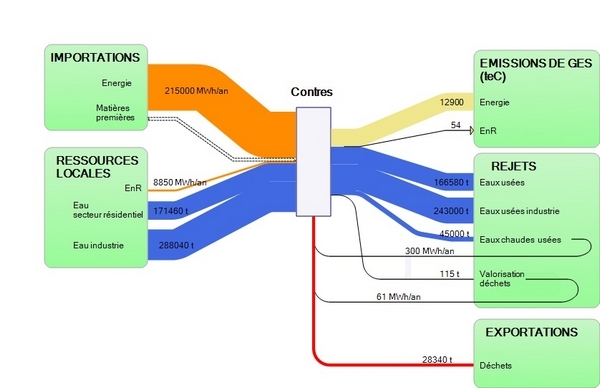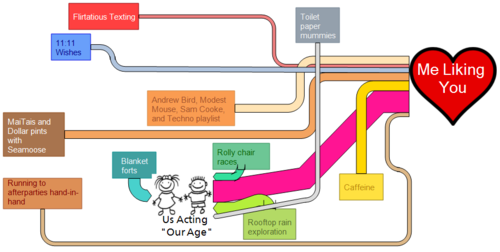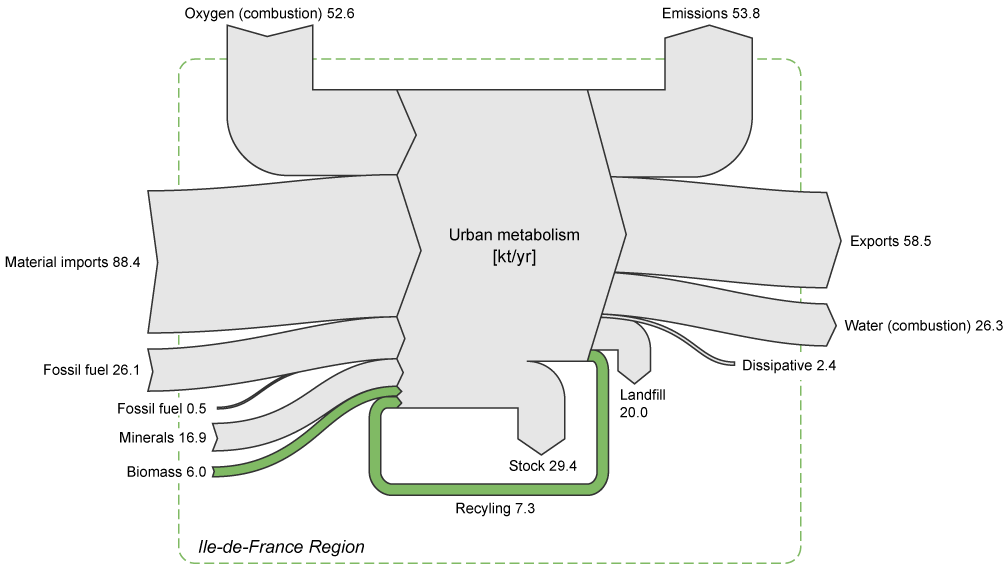Checking further on the authorship of the Sankey diagram I presented in this post, I came to the LCMP website at the University of Cambridge. LCMP? Yes … Low Carbon and Metals Processing. The engineering research group around Julian Allwood and Jonathan Cullen have three large research themes: WellFormed, WellMet2050, and WellMade.
The below Sankey diagrams are from the report ‘Going on a metal diet’ by Allwood, Cullen et.al. published within the WellMet2050 research theme.
The first Sankey diagram shows the global steel flows in 2007
the other the global aluminium flows in 2007:
One page 7 of the report the authors explain
“In our maps, the width of each line is proportional to the mass flow of metal. Values for the major flows are given in Mt (million tonnes). Steel flows less than 1 Mt and aluminium flows less than 0.05 Mt are not shown. Each major process step is shown as a vertical black line, with three possible outputs: useful metal (colored), process scrap (grey) and metal losses (black). Useful metal continues to flow to the next process step, while scrap loops back to the appropriate melting stage where it is recycled. Internal recycling loops, for example from the continuous casting processes for steel are shown small oval loops. (…)The working papers … give more detail about creating the Sankey diagrams
Unfortunately these two mentioned working papers are not (yet?) available on the website. These really fantastic Sankey diagrams have been compiled from different data sources. I thought I’d share them with you. Please visit the LCMP website and read about their other exciting projects.
